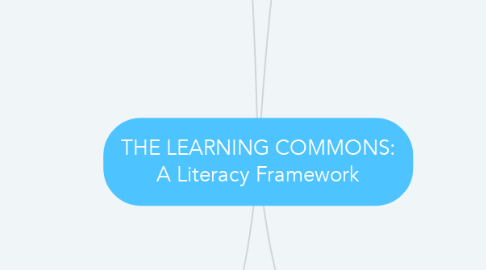THE LEARNING COMMONS: A Literacy Framework
by Autumn Landry

1. Build an Online Presence
1.1. Digital & Media Literacy
1.1.1. Cultivate critical thinking skills
1.1.2. Address the importance of Digital Citizenship
1.1.3. Use a variety of online tools to read, explore, collaborate, and research
1.2. Research
1.2.1. Introduce safe search engines
1.2.2. Encourage critical thinking when accessing information
1.2.3. Discuss how to collect information
1.2.4. Copyright
1.3. Provide opportunities to read online
1.3.1. E-books
1.3.2. Audio books
1.3.3. Websites
1.3.4. Online articles
1.3.5. Blogs
2. Create a Literacy Community
2.1. Invite community members into the learning commons, such as authors
2.2. Host book nights and literacy nights with families
2.3. Provide links and literacy information that can be accessed at home
2.4. Provide books in multiple languages and that support and represent a diverse community (race, religion, gender, LGBTQ, etc.)
2.5. Visit local library
2.6. Collaborate and co-plan with educators; share resources
2.7. Share professional development and new learning opportunities
2.8. Engage in book talks and book clubs with students
3. Instill a Love of Reading
3.1. Promote and display new and popular books
3.2. Run book clubs and provide opportunities for students to read and share their love of reading (Battle of the Books, Forest of Reading, etc.)
3.3. Encourage student input in the purchasing of books - what do they want to see in the library?
3.4. Have a variety of books that appeal to different reading levels and topics
3.5. Provide opportunities for students to explore a range of different books
3.6. Have clear signage that allows students to find and access books easily
3.7. Create welcoming and engaging book displays
3.8. Provide flexibility in when students can visit the library and check out books
4. Establish Literacy Spaces
4.1. Provide welcoming, comfy spaces for students to read independently and with others
4.2. Flexible seating
4.3. Have spaces to access a range of technology (chromebooks, iPads, etc.)
4.4. Makerspace and creation spaces
4.5. Accessible reading and writing tools (pencils, markers, paper, bookmarks, etc.)



